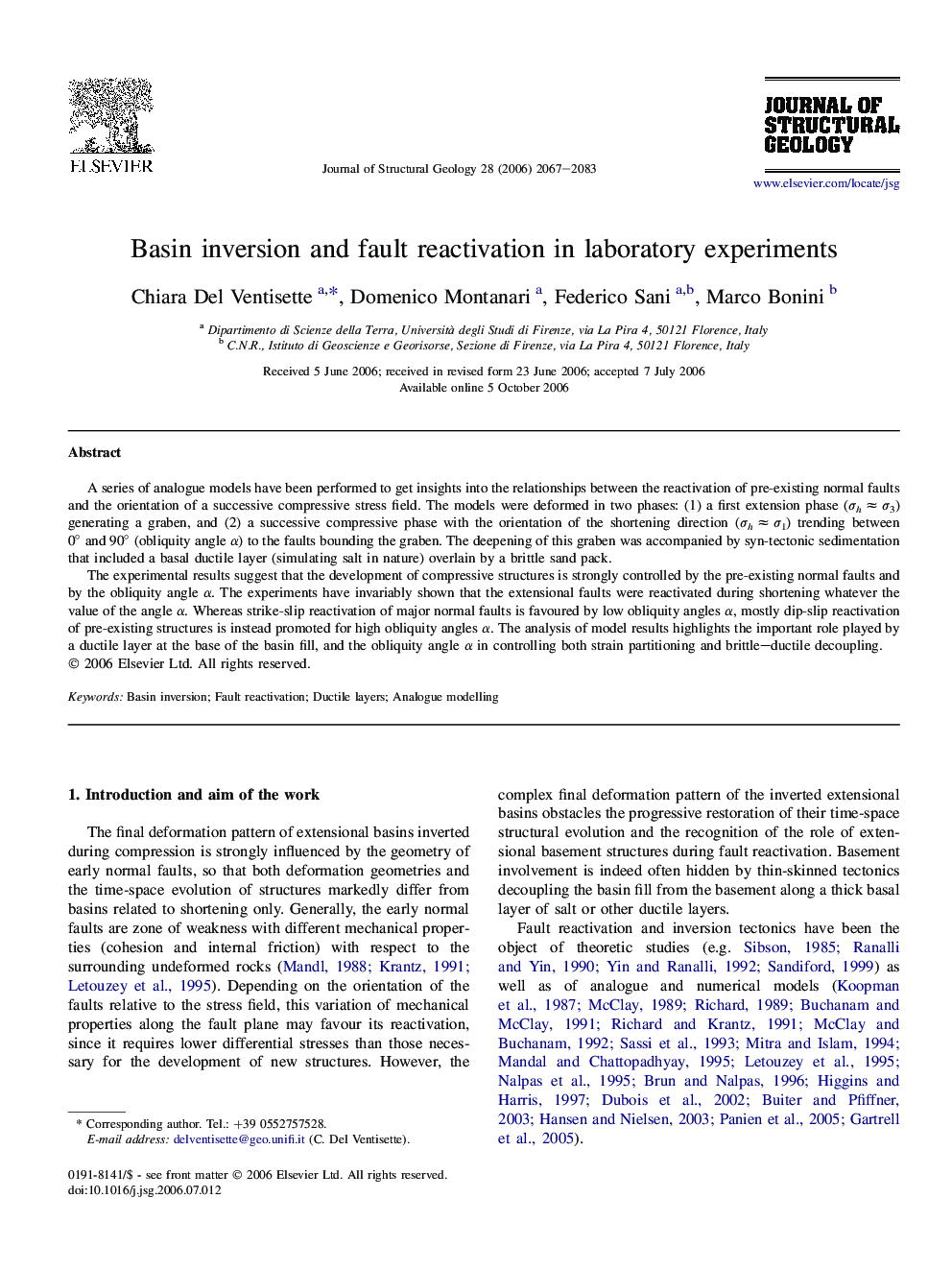| کد مقاله | کد نشریه | سال انتشار | مقاله انگلیسی | نسخه تمام متن |
|---|---|---|---|---|
| 4734492 | 1357126 | 2006 | 17 صفحه PDF | دانلود رایگان |

A series of analogue models have been performed to get insights into the relationships between the reactivation of pre-existing normal faults and the orientation of a successive compressive stress field. The models were deformed in two phases: (1) a first extension phase (σh ≈ σ3) generating a graben, and (2) a successive compressive phase with the orientation of the shortening direction (σh ≈ σ1) trending between 0° and 90° (obliquity angle α) to the faults bounding the graben. The deepening of this graben was accompanied by syn-tectonic sedimentation that included a basal ductile layer (simulating salt in nature) overlain by a brittle sand pack.The experimental results suggest that the development of compressive structures is strongly controlled by the pre-existing normal faults and by the obliquity angle α. The experiments have invariably shown that the extensional faults were reactivated during shortening whatever the value of the angle α. Whereas strike-slip reactivation of major normal faults is favoured by low obliquity angles α, mostly dip-slip reactivation of pre-existing structures is instead promoted for high obliquity angles α. The analysis of model results highlights the important role played by a ductile layer at the base of the basin fill, and the obliquity angle α in controlling both strain partitioning and brittle–ductile decoupling.
Journal: Journal of Structural Geology - Volume 28, Issue 11, November 2006, Pages 2067–2083